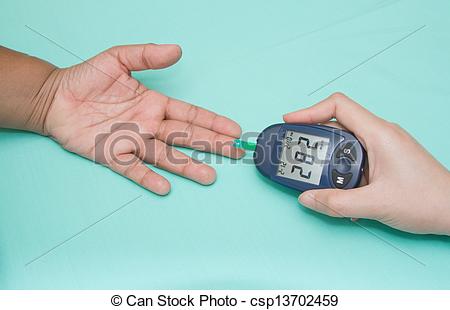Why a diabetic patient feels pain?
Managing diabetes can be tough. This is especially true when you begin to notice new symptoms. You may be wondering if these symptoms could be related to your diabetes.
The answer could be yes.
The most common type of diabetic neuropathy is diabetic peripheral neuropathy: pain in your hands or feet.
In the early stages of diabetic neuropathy, you may have no signs. You may have numbness or tingling in the hands, feet, or both. Because nerve damage can occur over several years, these cases may go unnoticed. You may only become aware of neuropathy if the nerve damage gets worse and becomes painful.
Pain caused by nerve damage from diabetes is called diabetic nerve pain.
Diabetic Nerve Pain Is a Growing Problem
About 8.2 percent of the adult populations in the Philippines have diabetes. Unfortunately, this number is only growing. As would be expected, the number of people suffering from diabetic nerve pain has also increased.
- It is estimated that more than 25 million Americans are affected by diabetes
- Diabetic nerve pain is a common diabetes complication, as are kidney and eye (retinopathy) conditions
- Approximately 21% of patients with diabetes have diabetic nerve pain
- This adds up to 5 million Americans with diabetic nerve pain
Nerve pain is not the same as other types of pain you may experience. Common over-the-counter pain medicines are not approved by the BFAD to treat nerve pain.
What causes diabetic neuropathies?
The causes are probably different for different types of diabetic neuropathy. Researchers are studying how prolonged exposure to high blood glucose causes nerve damage. Nerve damage is likely due to a combination of factors:
- metabolic factors, such as high blood glucose, long duration of diabetes, abnormal blood fat levels, and possibly low levels of insulin
- neurovascular factors, leading to damage to the blood vessels that carry oxygen and nutrients to nerves
- autoimmune factors that cause inflammation in nerves
- mechanical injury to nerves, such as carpal tunnel syndrome
- inherited traits that increase susceptibility to nerve disease
- lifestyle factors, such as smoking or alcohol use
Physical Therapy to Improve Functionality in Peripheral Neuropathy Patients
Peripheral neuropathy (PN) affects many Filipinos in many different ways. Whether a patient has sensory, motor or autonomic neuropathy (and, in many cases, a patient may have a combination), the resulting peripheral nerve damage brings with it direct functional ramifications.
Functional problems are difficulties patients face in living their life, making daily activities more difficult, impaired or even impossible. When encountering functional difficulties, a patient’s quality of life can often be improved by working with a physical therapist (PT). Most physical therapists work together with physicians to care for their patients.
For neuropathy patients, the best referral comes from a neurologist well-versed in diagnosing and treating peripheral neuropathy. A good neurologist will take an extensive medical history to identify risk factors associated with neuropathy, using this along with other tests to aid in a diagnosis. Similarly, a good physical therapist will utilize a complete history to gain insight into the person being treated, not relying on only the diagnosis. The physical therapist will identify functional deficits through the use of questionnaires, outcome scales, and objective clinical tools and measures. Expert therapists will demonstrate evidence-based practice to identify, measure, treat, and reassess the patient’s baseline and subsequent functional levels.
Finding an expert clinician is crucial to maximizing your medical and rehabilitation potential. Ask your neurologist if you have any of the following signs or symptoms that may be addressed with therapy:
- Pain
- Weakness
- Numbness
- Hypersensitivities
- Gait abnormalities
- Endurance deficits
- Motion limitations
- Balance impairments
- Problems moving in bed
- Bracing and/or orthotic needs
- Joint stiffness or contractures
A good neurologist will be familiar with the potential for therapy to help neuropathy patients. It will often be unclear whether or not a particular patient can benefit from physical therapy; however, an evaluation by an expert therapist and subsequent treatment poses no risk to the patient, and can only potentially help. Many patients may not have peripheral neuropathy as their only ailment. A physical therapist with extensive experience treating neuropathy patients will be able to formulate a personalized treatment plan so the neuropathy will not be exacerbated. Your neurologist can write a prescription for physical therapy evaluation and help you find an experienced physical therapist.
The neurologist may recommend medical treatment aimed either directly at the pathology or indirectly at the symptoms of the disease. The physical therapist may utilize a direct approach, attacking the problem leading toward the functional deficit, or work indirectly, circumventing the underlying problem and focusing on a compensatory strategy. A good physical therapist will utilize all available equipment, modalities, and therapeutic exercise to aid in every patient’s functional progress. Each patient may react differently to these therapeutics; careful progression over time will prove to be fundamental in successful treatment. Therapists may draw from the following range of equipments and therapeutic modalities to provide each patient with the best chance of pain-free, independent functionality:
- Skilled soft tissue techniques
- Peripheral and spinal mobilizations
- Thermal modalities
- Electrical stimulation
- Ultrasound
- Vibration platforms
- Near infrared phototherapy
- Balance systems and force plates
- Individualized therapeutic exercise
- Functional activities
Seeing a specialized neurologist and expert physical therapist can help give each patient a chance at the most positive outcome for functional improvements. Yet, even with the greatest care, not every patient achieves the level of function they desire. Nonetheless, as an empowered patient, you have to make every effort to fully live your life by accessing the best comprehensive treatment program possible.
Reference:
Diabetes Pain Help
The Neuropathy Association
National Diabetes Information Clearinghouse (NDIC)

